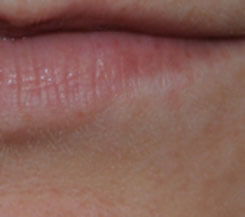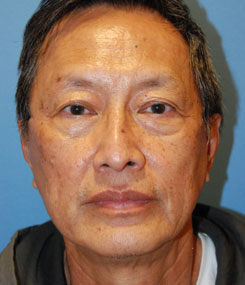We have a lot of experience in helping our Asian and our ethnic clients (including Latinos, African American and Middle Eastern patients get the best laser resurfacing procedure available in Seattle. The key difference for these patients is their darker skin tones. With laser resurfacing, the top layers of the skin are moved, including your skin cells (keratinocytes) and melanocytes (pigment cells).
The epidermis and dermis are separated by the basement membrane where the stem cells rise and populate your skin. With a pretty aggressive laser resurfacing procedure, the top layers of your skin are removed pass the basement membrane and into the dermis. Your unwanted pigments and wrinkles are removed and replaced with a new layer of skin that comes from the hair shafts or pilosebaceous unit. This is called the resurfacing part of the process where the skin cells from the hair shafts resurface the skin.
One of the things that concerns many people is the pseudo hyperpigmentation that can occur in Asian and ethnic patients. This involves the skin turning dark after a period of redness most evident in people that have dark hair and light skin. The dark hair signifies the level of pigmentation or risks of pigmentation the melanocytes will undergo after a period of inflammation. This occurs any time you do laser resurfacing.
What happens when you get hyperpigmentation? It can take several weeks to a few months for hyperpigmentation to go away. We can speed up the process by starting superficial chemical peels which you can do on your own. We have successful dealt with pseudo hyperpigmentation and can help you get rid of it.

Before Mole Removal with Laser

After Mole Removal with Laser
Note: Individual results will vary. Images do not constitute a promise or representation of any particular outcome or experience.
“My goal was to find a method to bring back a person’s natural youthfulness without the operated, unnatural look and that is why I have my patients bring in photos of them when they were age 5 to 30. My YoungVitalizer helps restore natural and youthful contours they haven’t seen in years.”
—Dr. Philip Young, Seattle Facial Plastic Surgeon




Hypopigmentation is the loss of pigment and often a bigger concern to our patients. This issue involves the melanocytes being damaged to a degree that there are missing pigment/melanocytes from a contiguous area resulting in white patches that are obviously quite evident on the darkest skin types. It occurs when the melanocytes are damaged because the CO2 laser resurfacing has been taken too deep or the post procedure cleaning was not done adequately. It can be corrected with CO2 laser resurfacing.
The use of lasers, chemical peels, and resurfacing techniques for the East Asian patients require experience. Many clinicians are weary of using resurfacing on dark Asian skin. The risks of hyper and hypopigmentation is high because lighter tones and colors of the skin are more conspicuous in the darker Asian skin. Post inflammatory hyperpigmentation can present a challenge to the doctor and the patient during the recovery. Sometimes, hyperpigmentation can be permanent. These are some of the reasons why surgeons all over the world hesitate to treat East Asian patients with resurfacing techniques.


Note: Individual results will vary. Images do not constitute a promise or representation of any particular outcome or experience.
During your initial consultation with Dr. Young, will have the opportunity to ask questions and relay any concerns and fears with him and our patient care coordinators.
When you come in, we are going to discuss how aggressive you would like us to be with your laser resurfacing. We will talk about whether you would like us to do fractional resurfacing or traditional resurfacing.
You can email, call 425-990-3223 or text 425-341-3893 to set up an appointment. If you live out of town, we can schedule a phone consultation with you.
Here at AFPS, our staff will take the time and care to set you up with a great treatment plan. Treat yourself today to a beautiful more rejuvenated look today!
